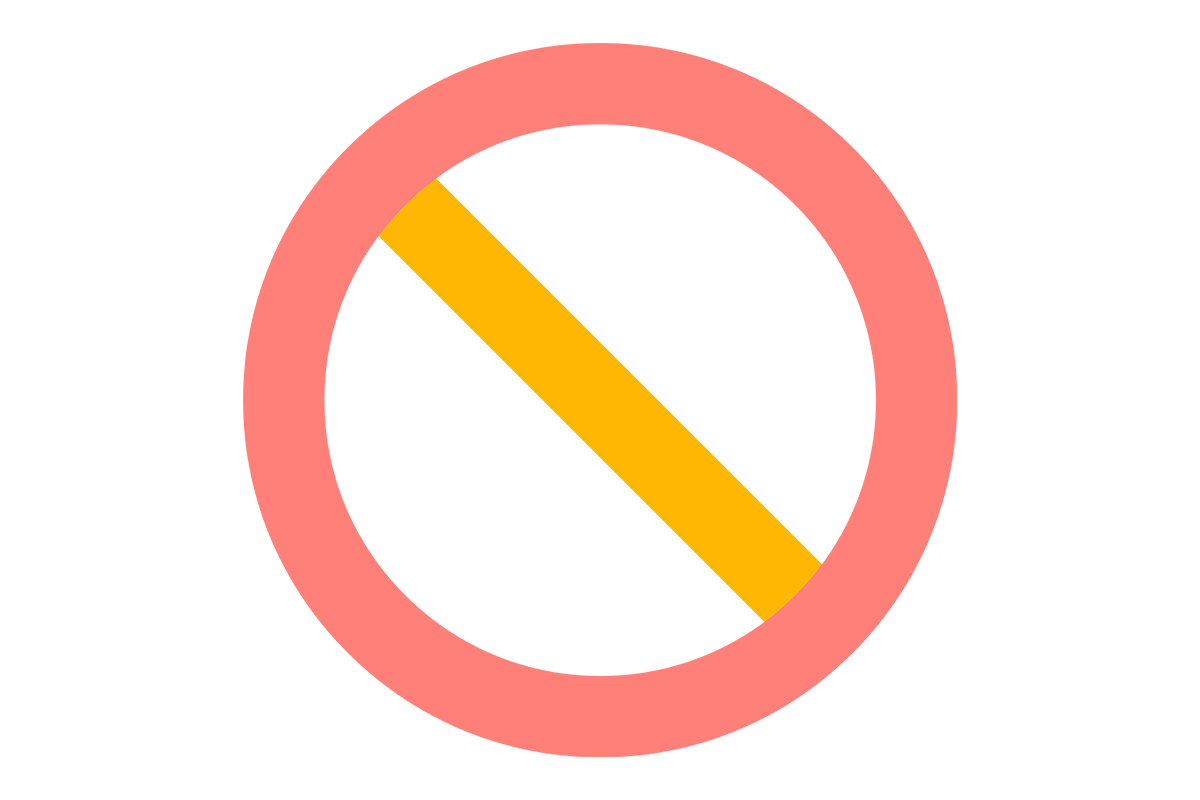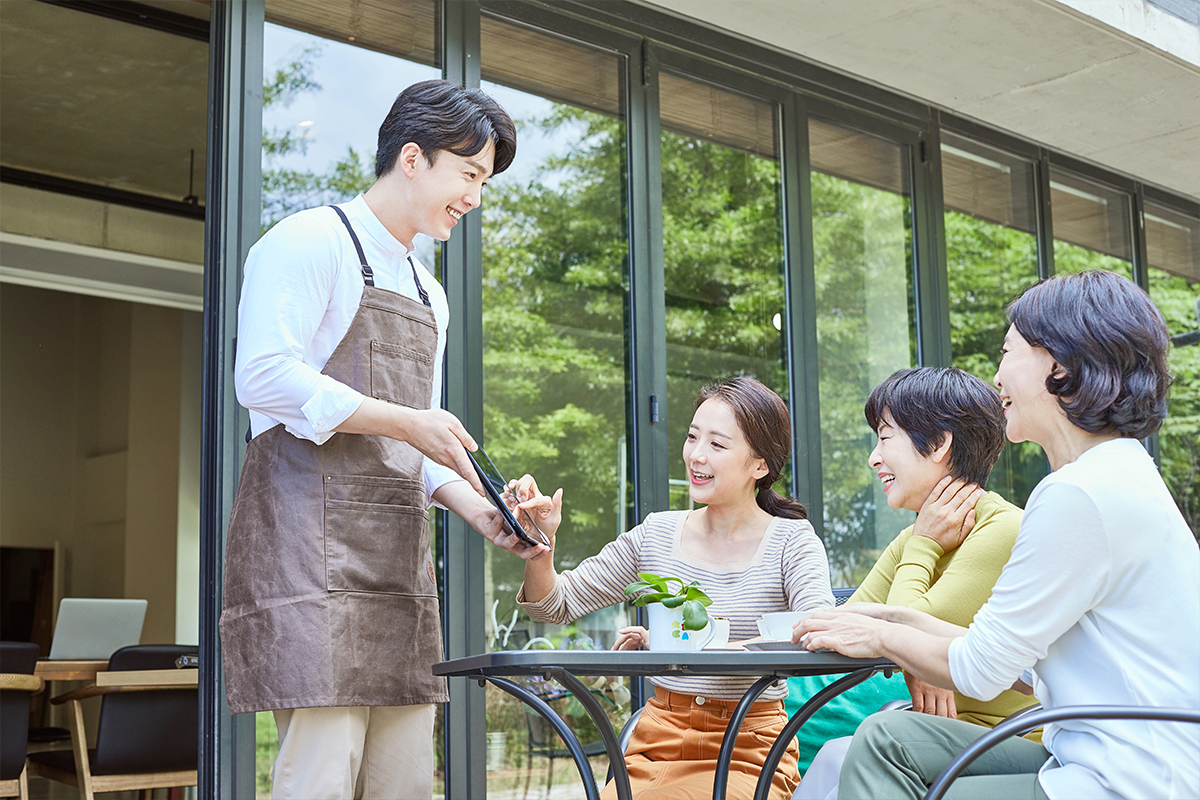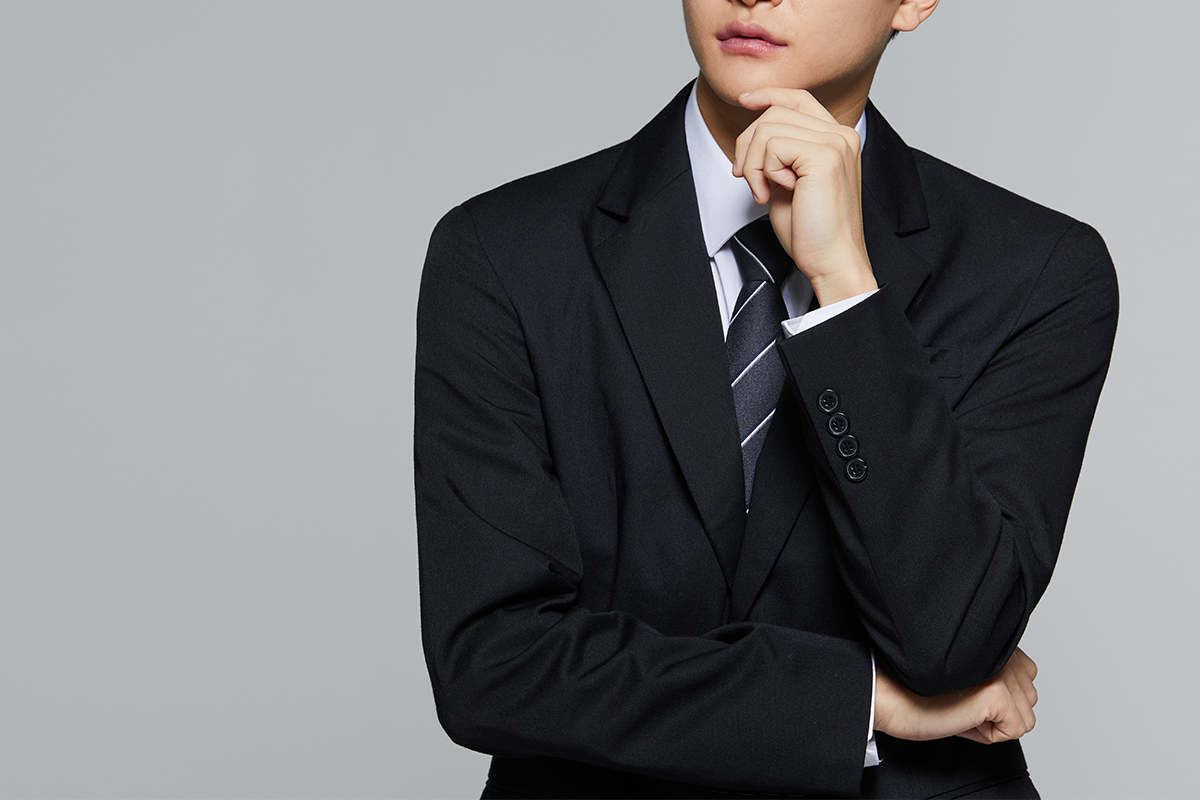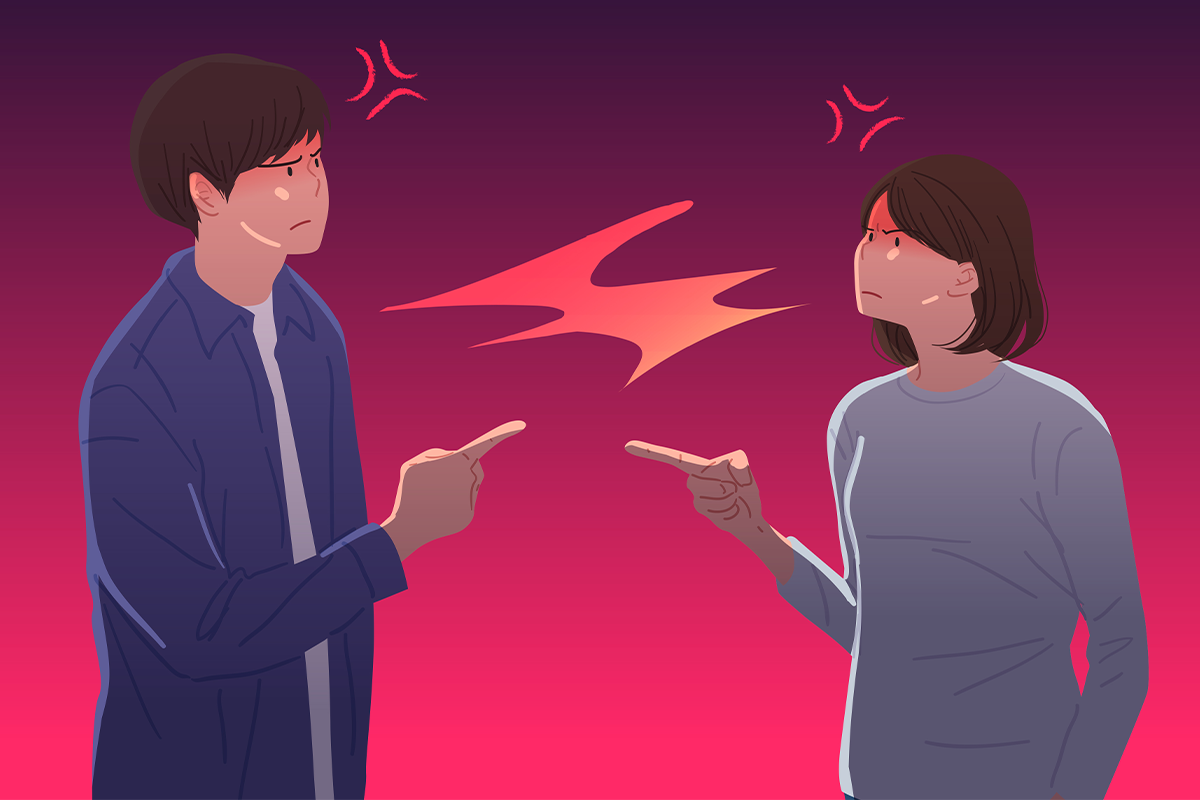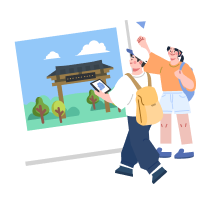Source: extreme MOVIE/Hankook Ilbo
Have you ever been refused entry anywhere?
In South Korea, there are places that don't allow certain groups.
Various groups of people are targeted, from children to YouTubers, and signs are put up in front of restaurants and cafés, designating the space as a "No Kids Zone" or "No Tuber Zone".
It shouldn't come as a surprise that prohibiting certain members of the public access to a place can cause controversy. In this article, we will take a look at some Korea's 'No * Zones'.
South Korea's 'No * Zones'
![Korea's No * Zones refuse entry to certain groups]()
A 'No * Zone' refers to a space to which specific groups are denied access.
In particular, restaurants and cafés in South Korea are prone to introduce these kinds of restrictions, and you can see signs in front of stores that specify who is not allowed entry.
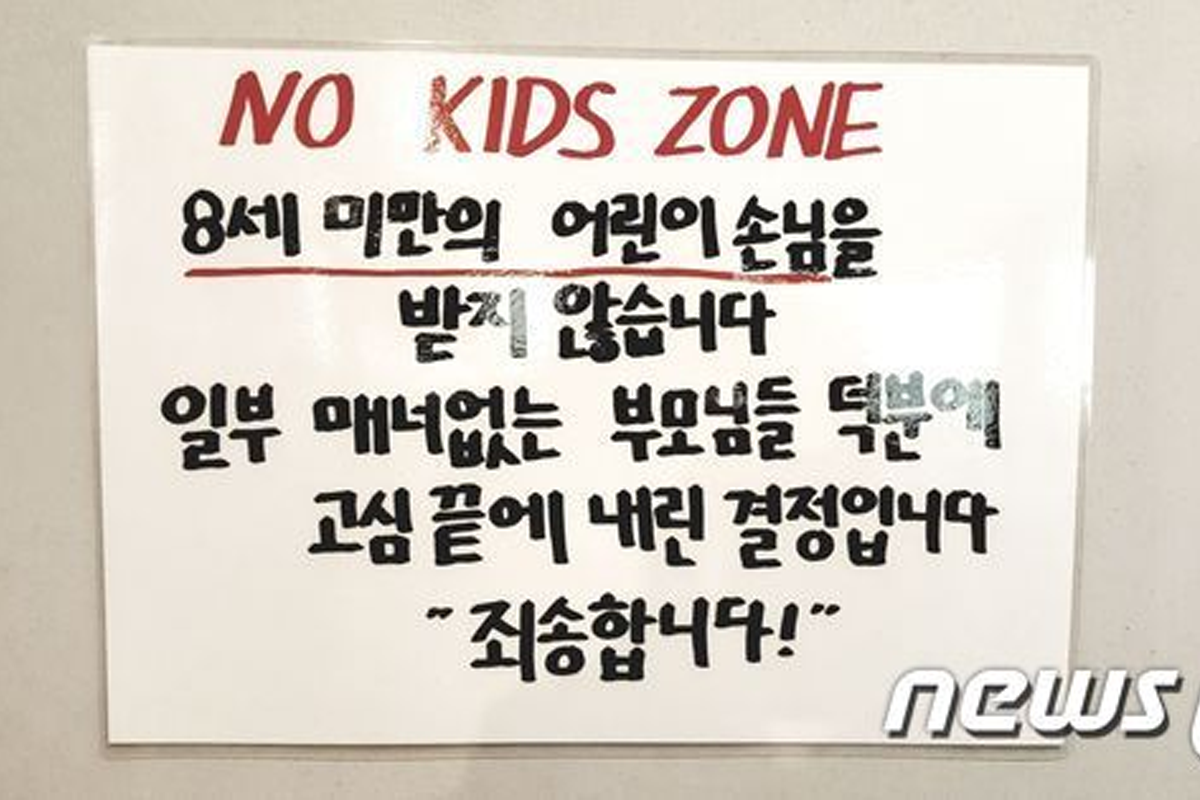 Source: NEWS1
Source: NEWS1
Although businesses have no legal basis to enforce the restrictions, most cases costumers see no alternative than to adhere to the demands.
These zones have caused a lot of controversy since they started popping up around 2014.
What are the pros and cons of these restrictions? Keep on reading to find out!
No Kids Zones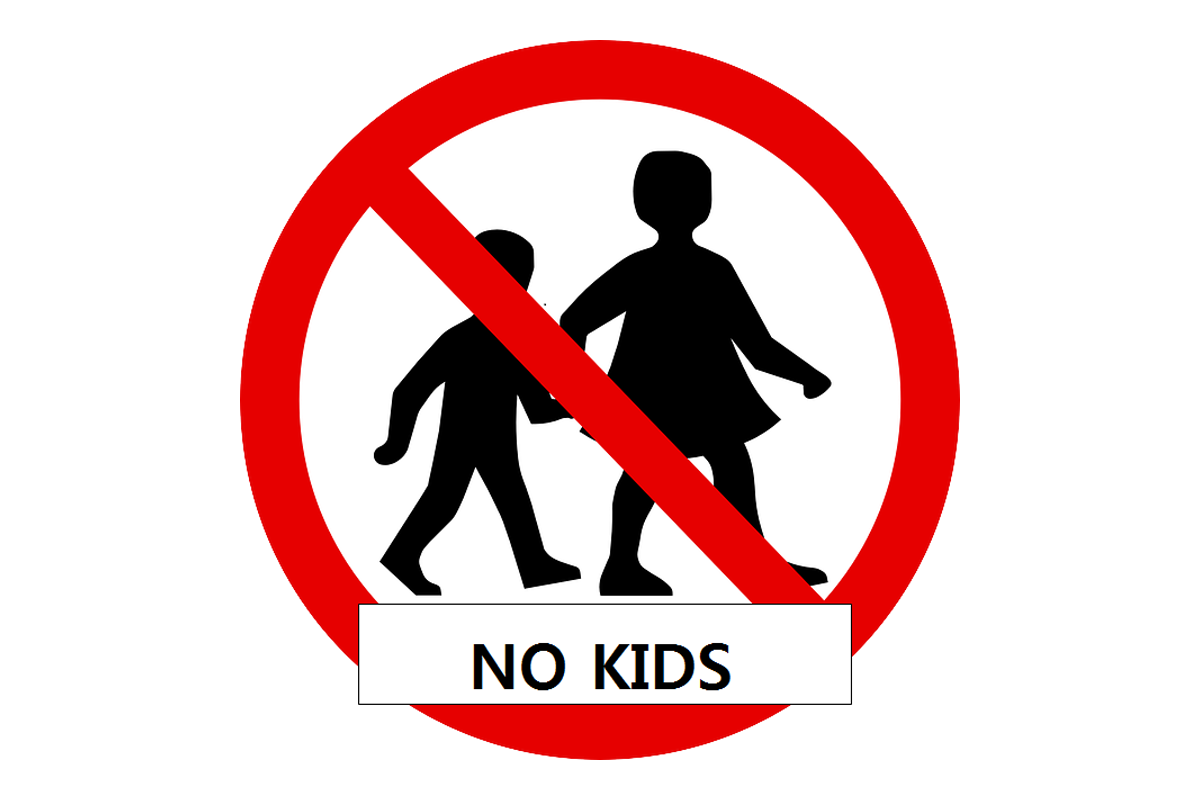 Source: Hyundae News
Source: Hyundae News
'No Kids Zone' refers to a space where children under the age of 13 are denied entry. It was the first 'No * Zone' to appear, and the first thing that comes to mind when discussing the topic.
These are not spaces such as pubs and entertainment establishments where children are legally prohibited from entering. Instead, the term is used when children are denied access places such as restaurants, cafés and movie theaters.
No Kids Zones first started to appear in 2014, and by now they can be found both not only in popular areas in Seoul, such as Hongdae and Gangnam, but also in tourist destinations such as Busan and Jeju Island.
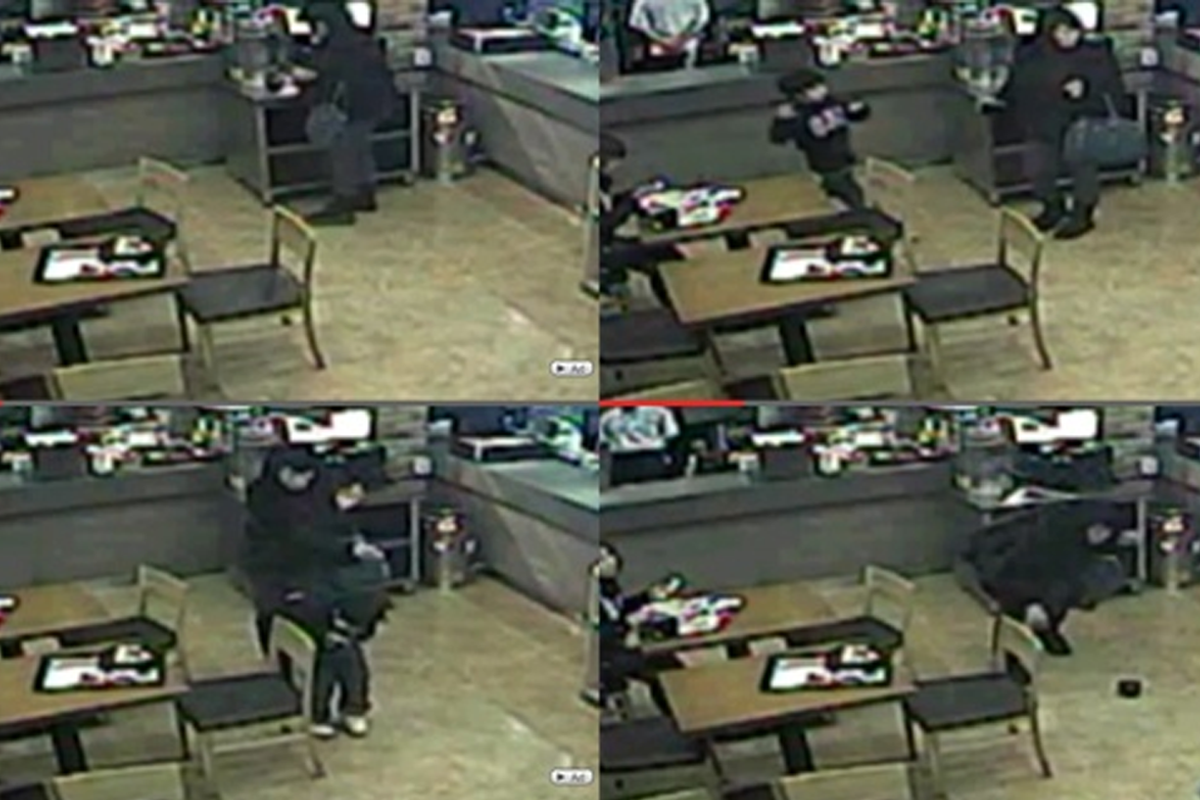 Source: Ilyo Seoul
Source: Ilyo Seoul
The reason why No Kids Zones started to appear can be traced back to an incident in 2012.
A mother of a child posted online that her child had suffered a facial burn injury after a woman had spilled hot broth in a restaurant. The mother initially received a lot of sympathy from the online community, and the alleged perpetrator was widely criticized.
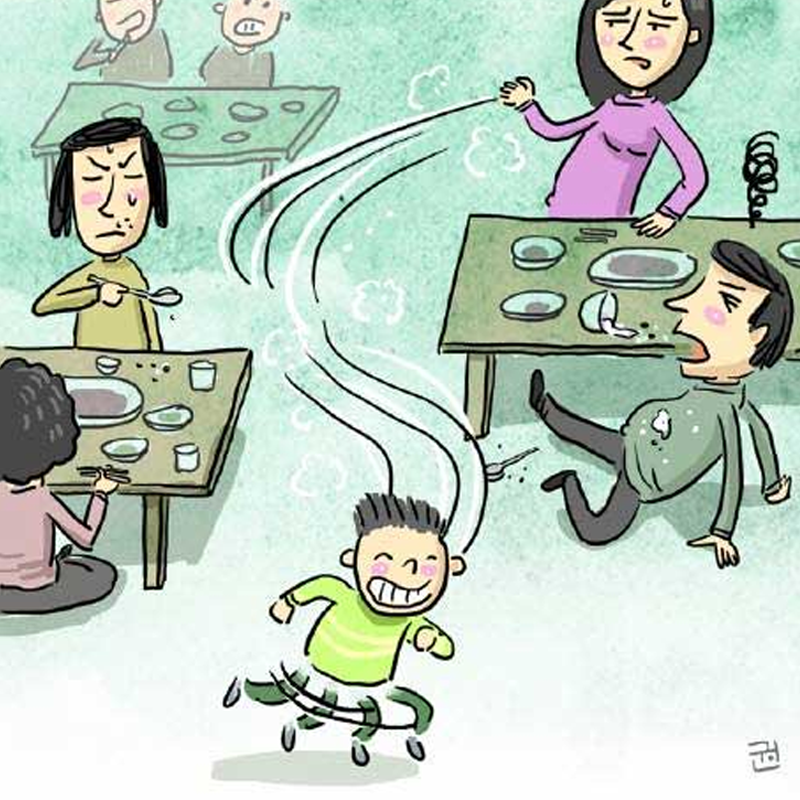 Source: DongA DB
Source: DongA DB
However, the criticism was redirected once the CCTV footage of the incident was released. It turned out that the child was injured after running around the restaurant, carelessly bumping into the woman and thus causing the accident.
People were shocked to see the double standards of the parents. Not thinking twice about victimizing people online, the parents wouldn't acknowledge that they had a responsibility to keep their child from running around and causing havoc.
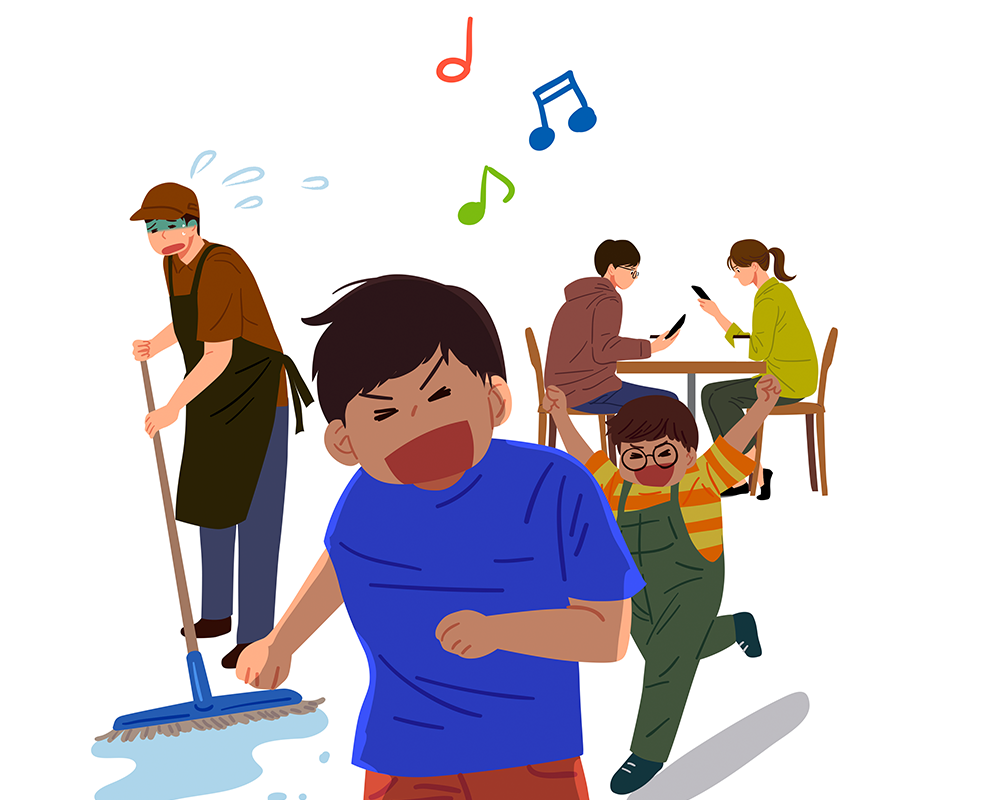
This led to similar incidents in the past being highlighted.
People started complaining about irresponsible parents. Some behaviors that were discussed included parents who didn't restrain their children from running and screaming in public places, parents who wouldn't take responsibility when their children caused material damage to properties, and parents who changed their baby's diaper in cafés.
And so No Kids Zones started to appear.
In other words, there is a simple explanation for the introduction of No Kids Zones. Not only can wild and noisy children be a disturbance to other customers, but the establishment is often held responsible in the event of an accident.
Taking this into consideration, there are many people who are in favor of No Kids Zones.
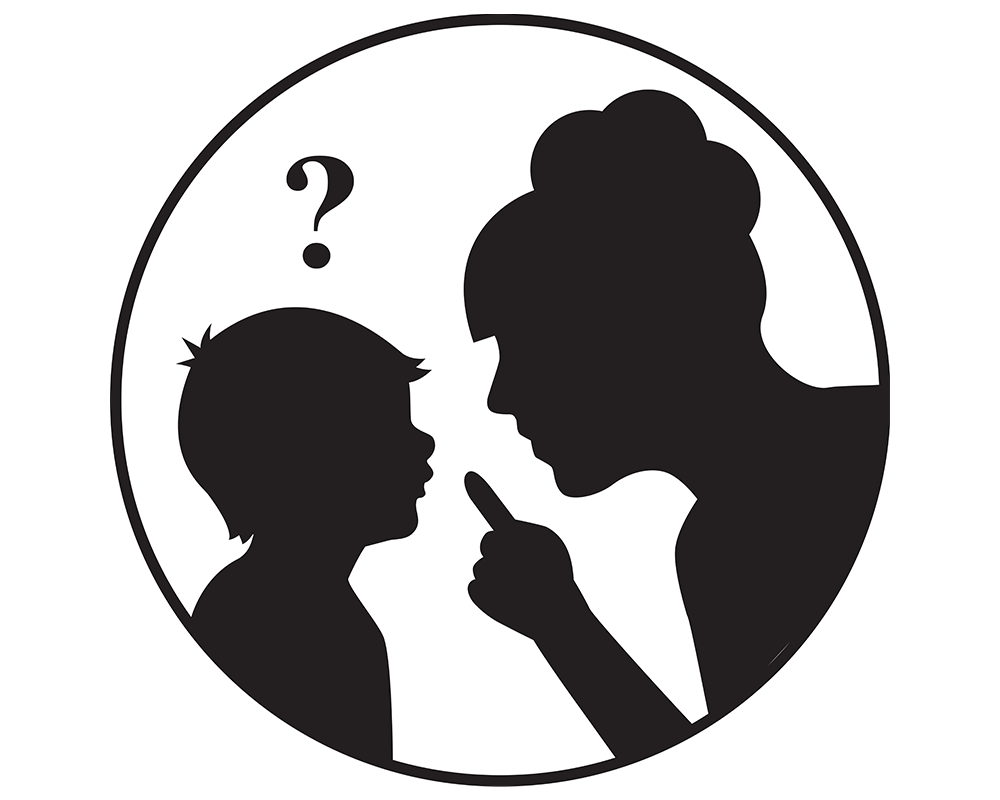
However, there are also voices that say that No Kids Zones are discriminating against children. Is it fair to label all children as immature? Is it fair to demand parents to always be there to restrain their children's every move?
We have all been children, and isn't learning how to adapt to different social situations a part of growing up?
No Youth Zones

Next, there are also so called 'No Youth Zones', referring to places where middle and high school students are asked to refrain from entering.
Let's take a look at an example from a coffee shop in Busan.
The sign on the picture above says in Korean:
"Recently, middle and high school students have visited our store and have (despite us politely asking them to stop) been smoking, spitting on the floor, acting impolitely, and even swearing at our employees. In order to maintain a pleasant environment, we have decided to deny them entry."
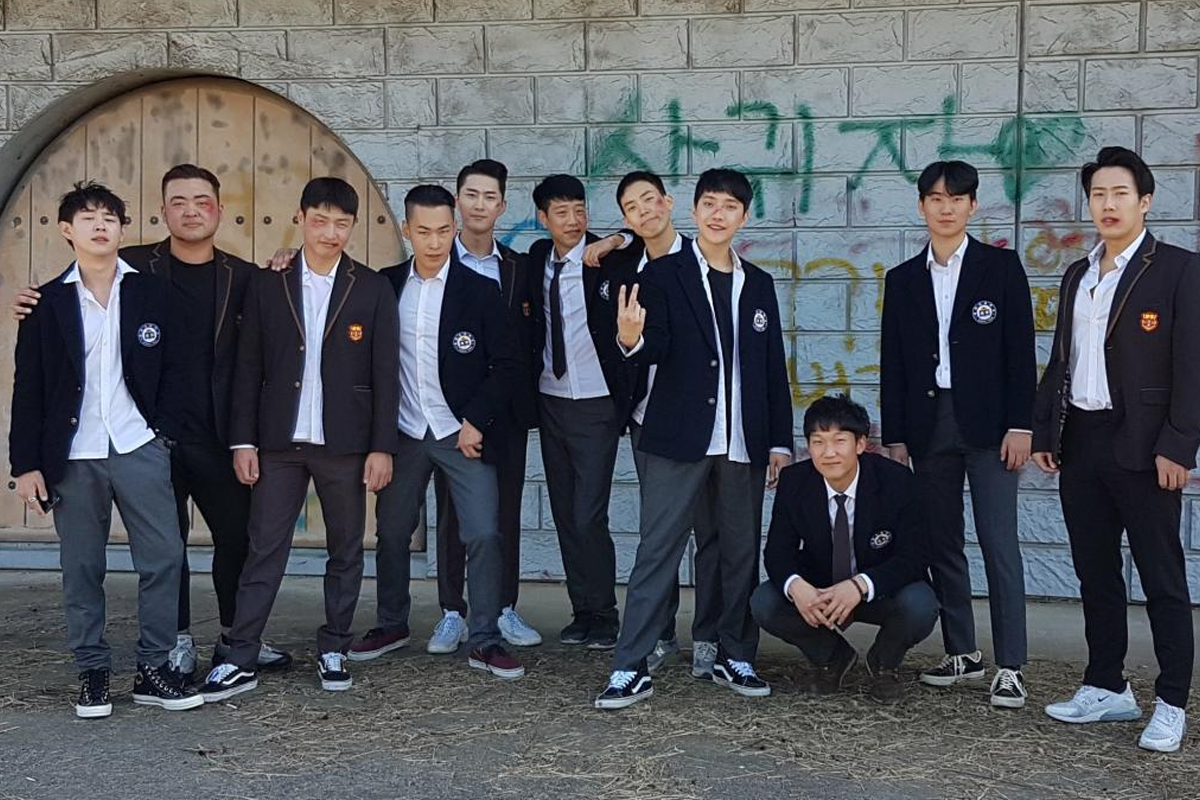 Source: extmovie.com
Source: extmovie.com
Like in other countries, there are groups of young school students in Korea that engage in deviant behavior that can disturb or even harm other.
It seems like these kinds of youth groups had been frequenting the coffee shop, occupying tables and disturbing other customers by being rude and smoking in non-smoking areas. As a result, the store decided to ban all middle and high school students from entering.
Proponents argue that it is the store owner's right, as well as the right of other customers, to prevent rogue students from entering. They argue that the fault lies with the students who didn't behave in the first place.
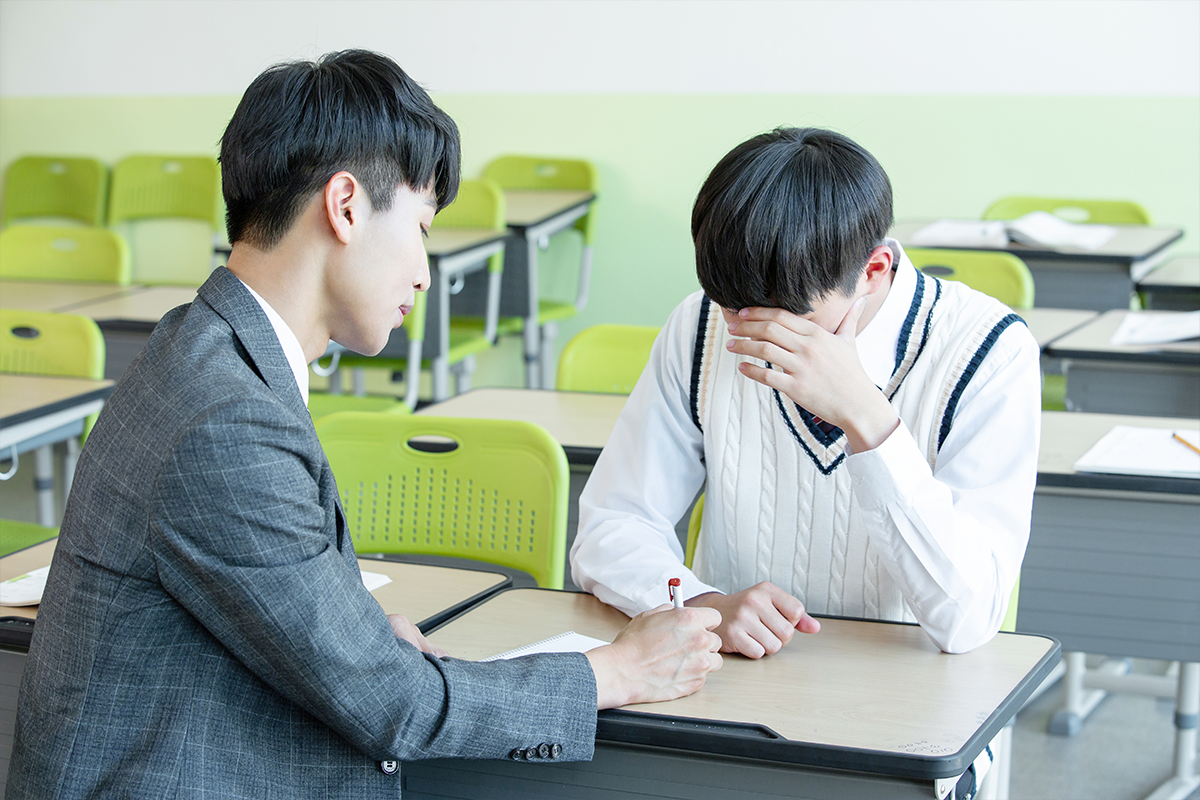
However, others argue that banning all youth because of the behavior of a few rotten eggs is discrimination. Rather than generalizing and blaming all youth students, they call for grown-ups to try to lead the young to the right path.
No Study Zones
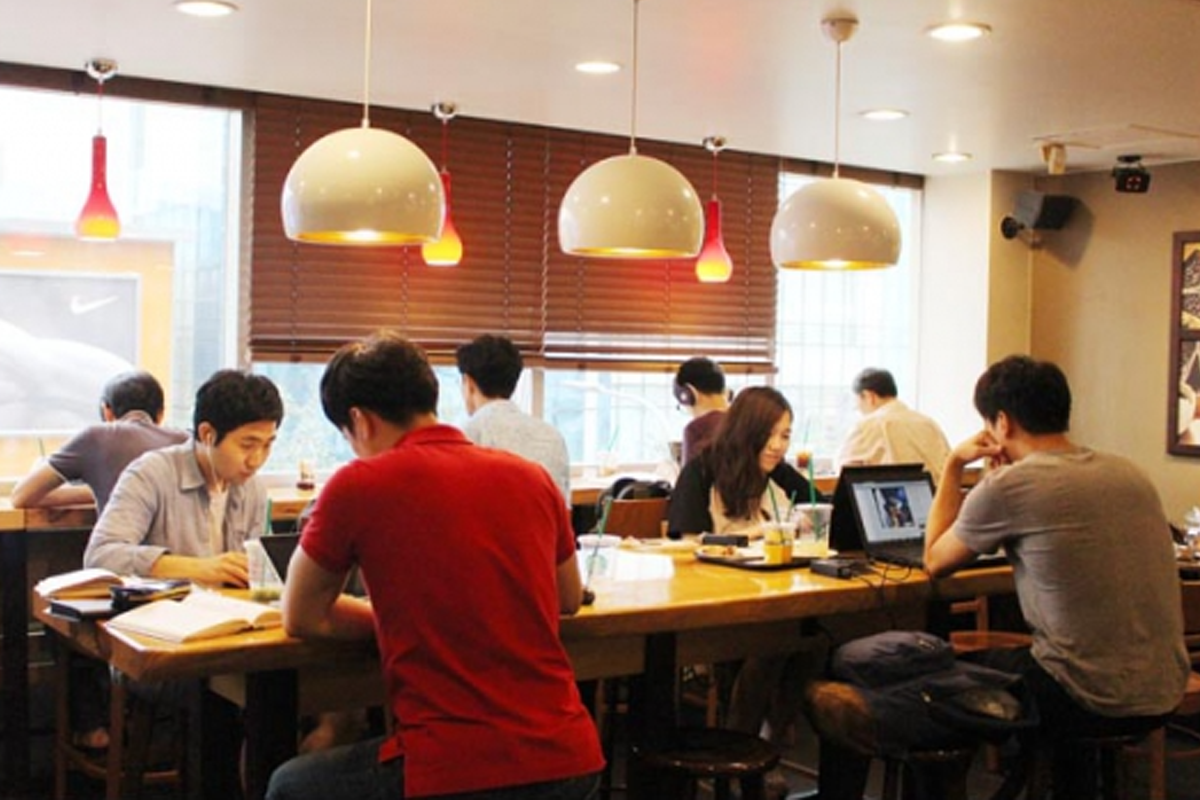 Source: foodnews.news
Source: foodnews.news
Other cafés have instead set up No Study Zones to prevent customers from studying in their stores.
In Korea, many people head to cafés with the main purpose of studying. Called 카공족 (Ca-gong-jok = café study tribe) in Korean, they arrive with laptops and books, and they can occupy a table for several hours.
Indeed, most Korean cafés are well suited for studying, being equipped with electric outlets and fast Wi-Fi.
Large cafés close to universities often target this group of people, offering all that a student could ask for, including a nice and quiet atmosphere.
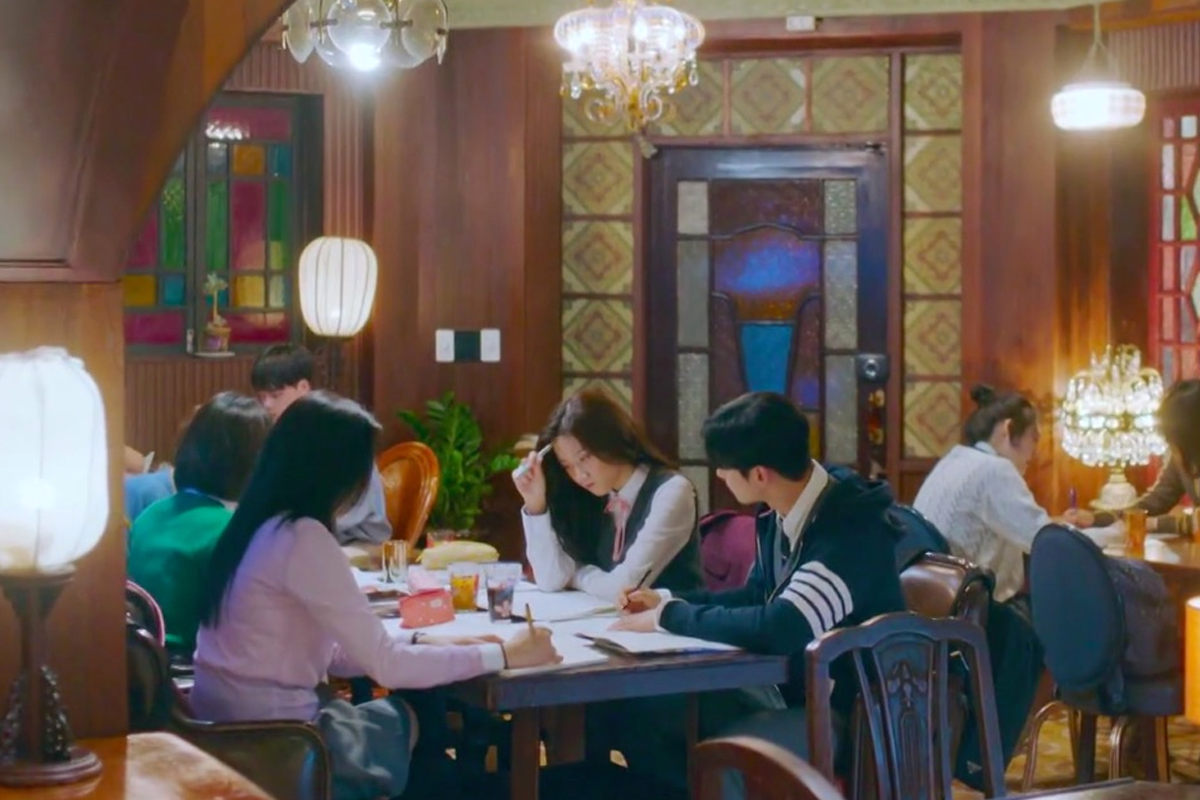
However, other cafés, especially small non-franchise cafés, or cafés located in tourist hot spots, don't appreciate the Ca-gong-jok. This is because they overstay their welcome by occupying tables for a long period of time, leaving other potential customers without a place to sit.
Needless to say, ordering one cheap drink before proceeding to occupy a table for several hours, sometimes a full day, will have an effect on the café's turnover.

It is also frustrating for regular customers, who might feel like they have to keep their voices down to not disturb those around them who are studying with a serious expression on their faces. Some Ca-gong-jok even complain to the store owner about other customers being too noisy.
However, some also argue that it is unfair of stores to ban them from studying. They, too, are paying customers. Although there are definitely cases of people overstaying their welcome, many also take care to order additional drinks throughout the day to justify their stay.
No Tuber Zones
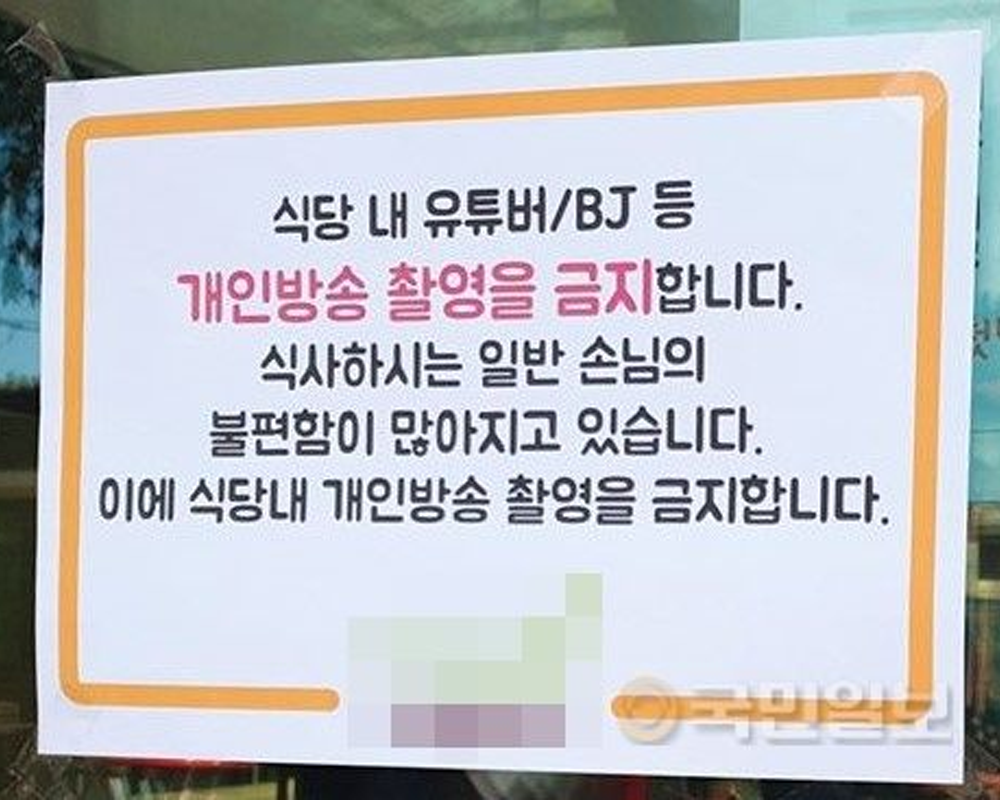
This sign above reads as follows:
"Creators of individual broadcasts, such as YouTubers and BJs, are prohibited from filming at the restaurant due to the increasing inconvenience of other costumers. Therefore, please refrain from filming such videos."
Places like these that ban YouTubers and BJs (Broadcast Jockeys - Korean livestreamers) from filming are called No Tuber Zones.
Having creators making videos or live-streaming can have promotional benefits and attract more customers. So why do stores ask them not to come?

It is mainly famous restaurants and other hot spots that put up No Tuber Zone signs. Creators like to visit hot places as the number of views for such videos is more or less guaranteed.
The problem is that some creators film without asking for permission, and this can be a nuisance to both customers and staff.
YouTubers and BJs will comment on food and other in their commentary, disturbing the peace of other paying customers. Furthermore, they often film the kitchen and their surroundings without having received permission.
Some creators are even said to demand free meals from the restaurants they visit as compensation for their videos.
 Source: Segye Ilbo
Source: Segye Ilbo
With the arguments above in mind, it shouldn't come as a surprise that many people welcome No Tuber Zones.
However, some YouTubers argue that it's not fair that restaurants allow people to take pictures of food and upload on social media, whereas they prevent people from creating more interesting videos.
Conscientious YouTubers who always make sure to receive permission before filming also feel like they are being generalized and treated unfairly.
No Believer Zones
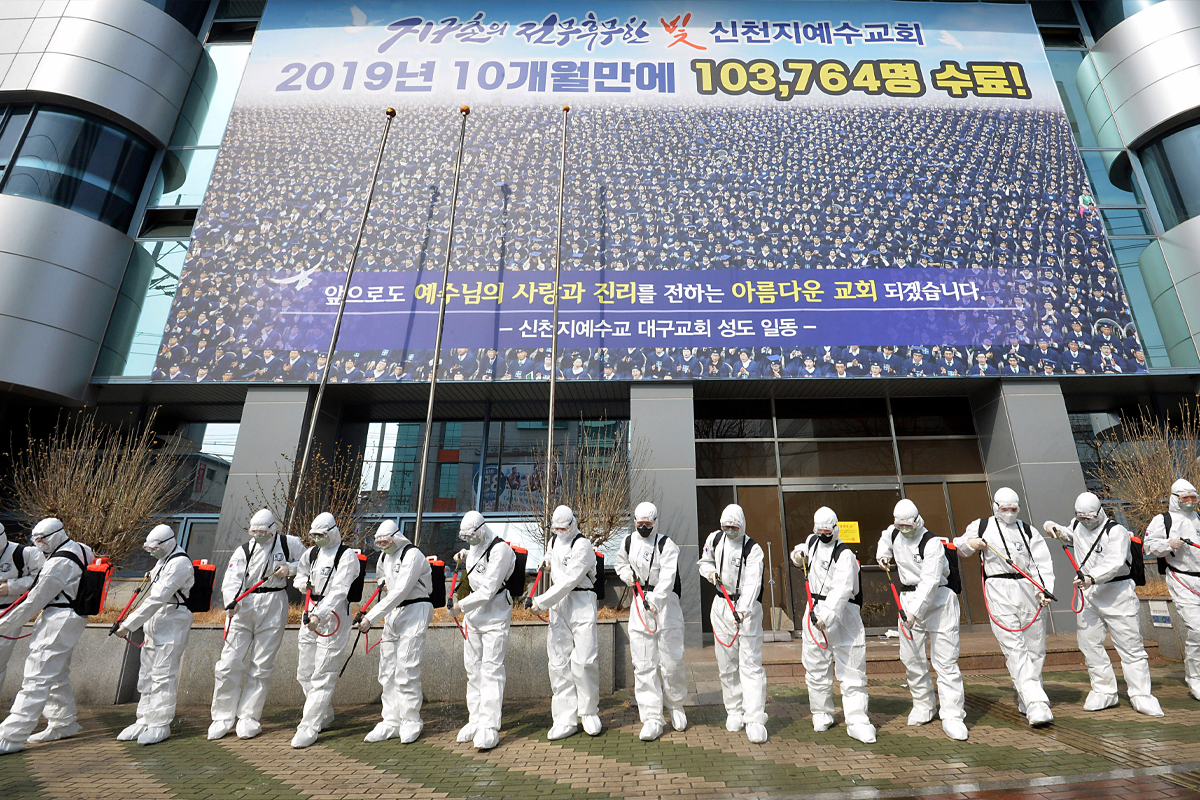 Source: Newsis
Source: Newsis
Since last year, there are also places that designate themselves as No Believer Zones.
To understand their origins, we have to take a look at the COVID-19 outbreaks in South Korea. The first outbreak of COVID-19 in the country started in February last year, and the second wave hit the country half a year later in August.
These two outbreaks were both driven by religious groups.
Shincheonji Church of Jesus, a controversial Christian religious group, stood in the center of the first outbreak. The second outbreak saw many cases from the Protestant Sarang Jeil Church.
While most people did their best to follow COVID-19 quarantine guidelines, members of certain churches ignored them and held large services and gatherings. Due to this, the virus spread quickly among the members.
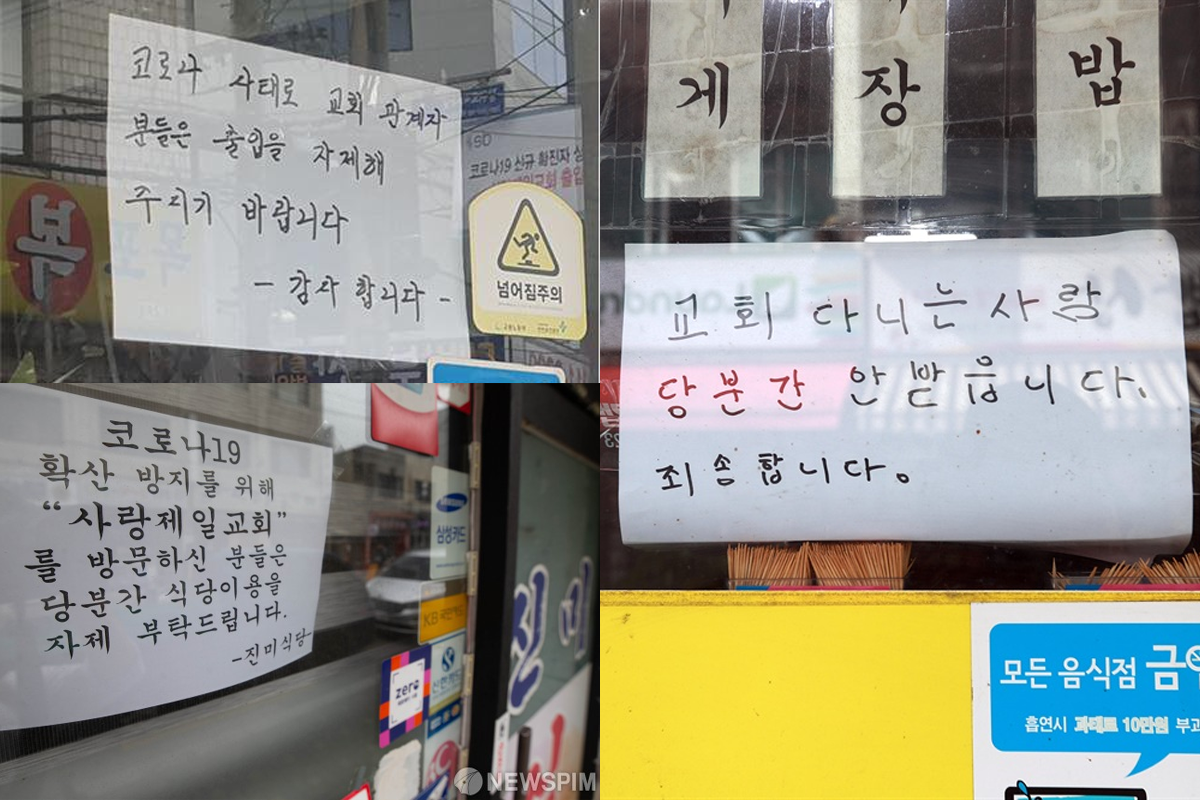 Source: NewsPim, OhmyNews
Source: NewsPim, OhmyNews
Due to the careless actions of the churches, the image of non-mainstream religions, but also that of Protestant churches, hit rock-bottom last year. Many people suffered because of their selfishness.
As some churches continued to ignore official guidelines, people started worrying about sharing the same space with religious believers. This lead to some restaurants located near churches starting to ban churchgoers from entering.
Arguments For 'No * Zones'
1. The Rights Of The Owner

Those in favor of 'No * Zones' argue that it is the right of the owner of a business to deny access to certain groups.
As we have seen above, there is a case to be made that some business may suffer financial damage if they were to stay open for everyone. To reduce damages, shouldn't businesses be allowed to set their own rules?
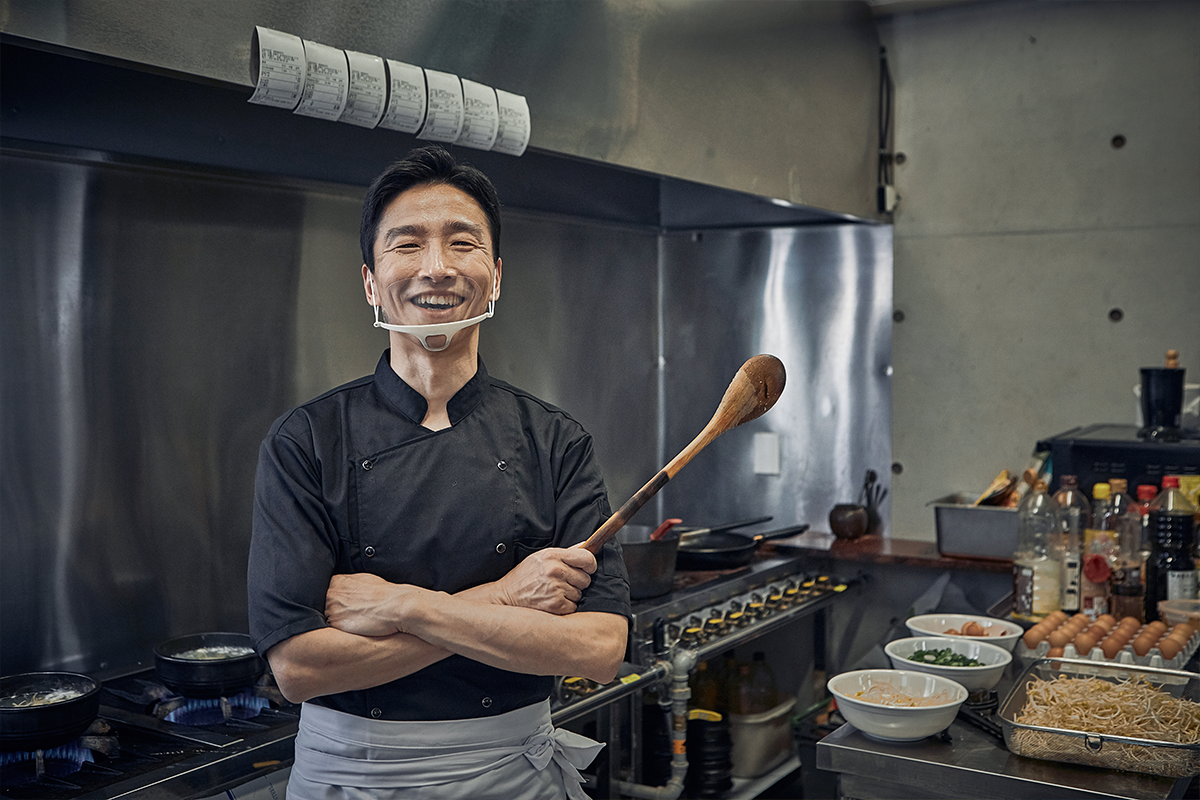
Article 15 of the Constitution of the Republic of Korea guarantees freedom of business. Because the Constitution is the basis of all laws, businesses are allowed to continue with 'No * Zones' as long as the freedom of business can be upheld.
2. Consumers Rights
In 2019, the market research company Embrain Trend Monitor conducted a survey on 1,000 adults in South Korea on the topic of No Kids Zones.
More than 6 out of 10 (66.1%) said that they supported having child-free zones. Among them, 75.3% (duplicate responses possible) answered that as costumers, they should have the right not to feel uncomfortable or suffer damage.
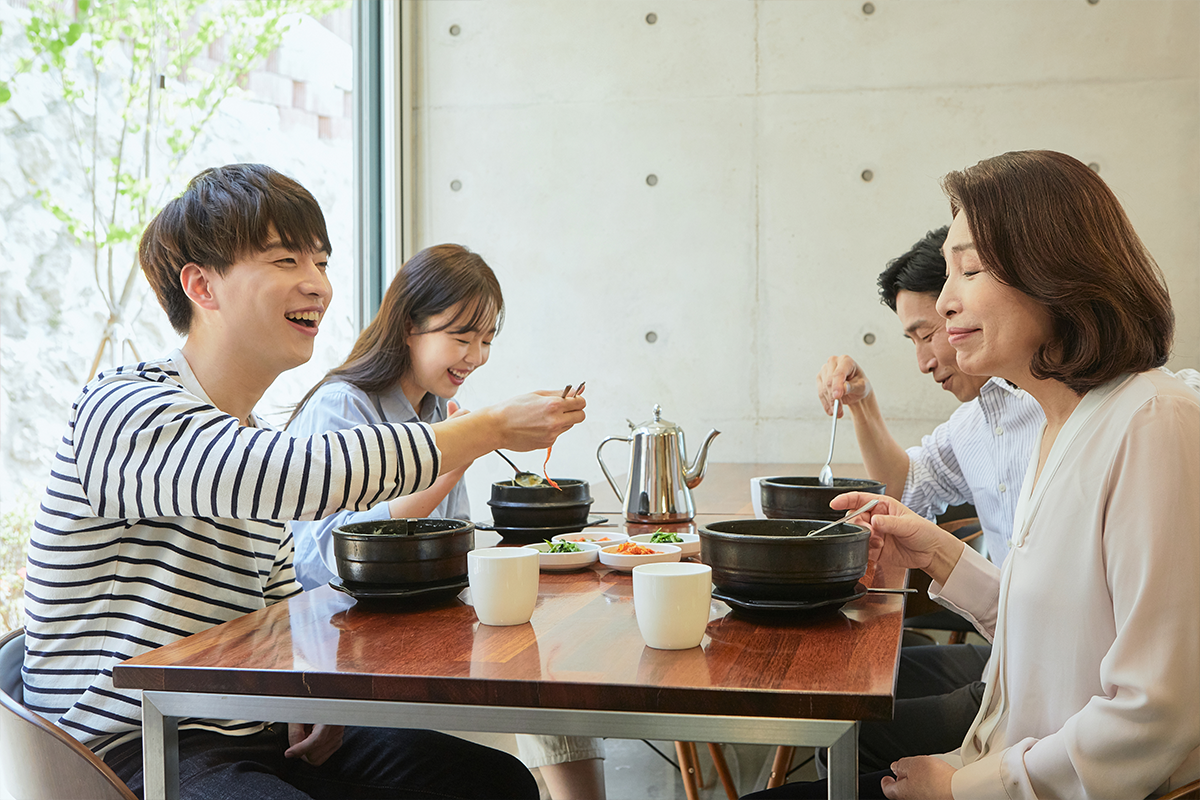
The result of the survey tells us that not only business operators suffer from inconvenience, but many customers prefer child-free zones too. They believe that restricting certain groups from entering is for the sake of other regular customers.
3. Consumers' Freedom Of Choice![Man in suit considering his position on a topic]()
Some believe that the increase of 'No * Zones' gives more freedom of choice to customers.
For example, people who prefer lively cafés where they can chat away can choose No Study Zone cafés, and those who prefer a quieter atmosphere will have other alternatives.
Similarly, if you believe that the spread of COVID-19 is fueled by churchgoers, you can feel more safe in a No Believer Zone restaurant.
Arguments Against 'No * Zones'
1. Discrimination Against Certain Groups
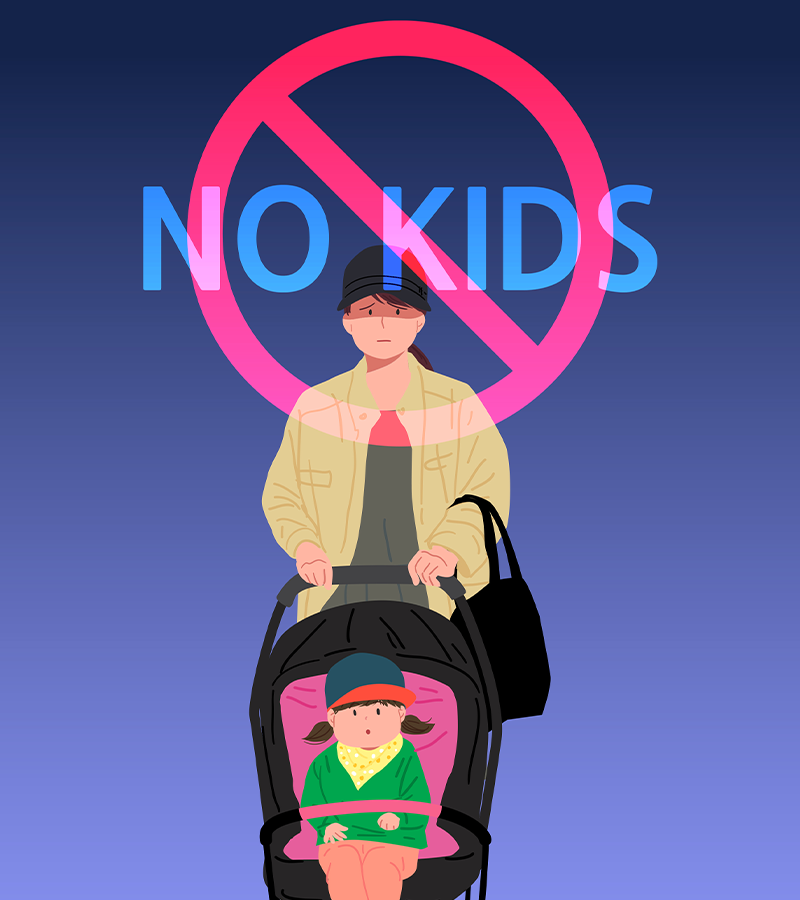
However, there are also many that oppose No-Zones. They claim that these restricted areas can spread discrimination and hate.
In 2017, the National Human Rights Commission of Korea ruled that No Kids Zones constitute an unjustifiable act of age discrimination.
Freedom of business should be guaranteed, but there must be a justifiable reason to exclude a specific group from using the services of a business.
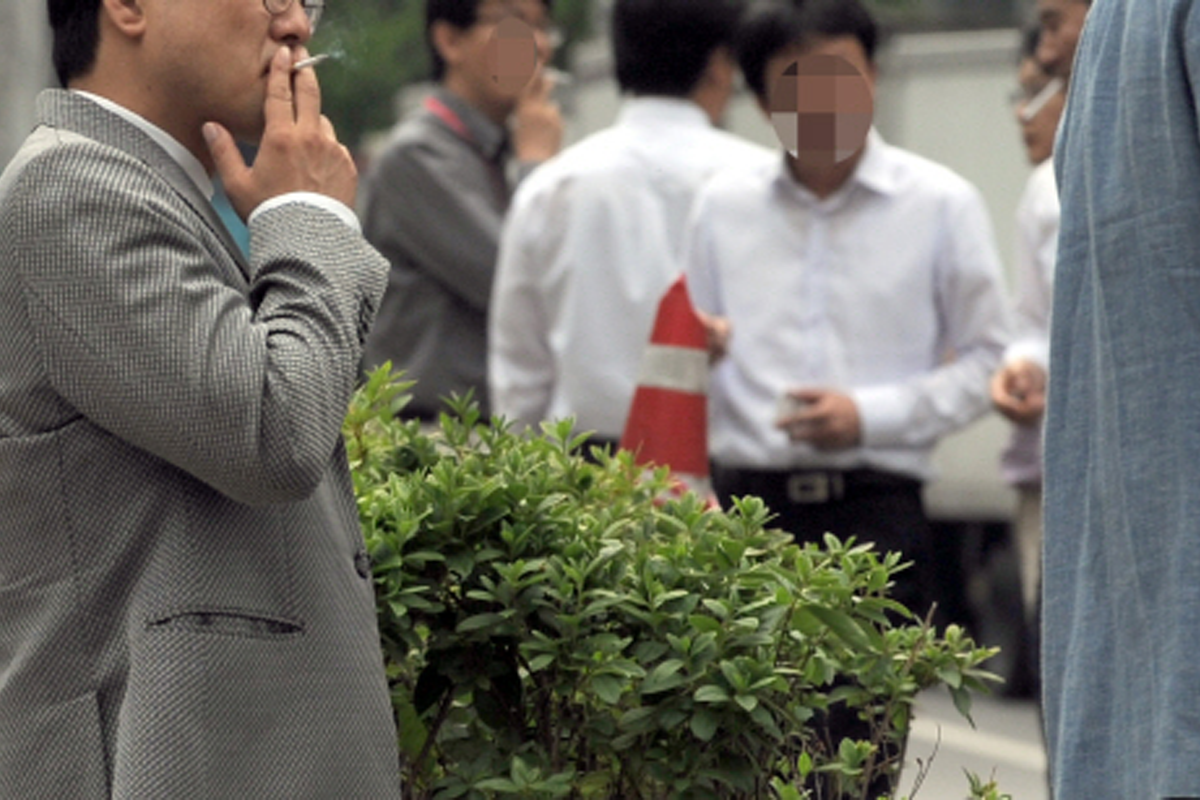 Source: Newsis
Source: Newsis
Let's take non-smoking areas as an example.
A non-smoking area is a space where smoking is prohibited to protect the health of other people.
In Korea, men that smoke far outnumbers women that smoke. So would it be justified to bar men from entering non-smoking areas because of this?
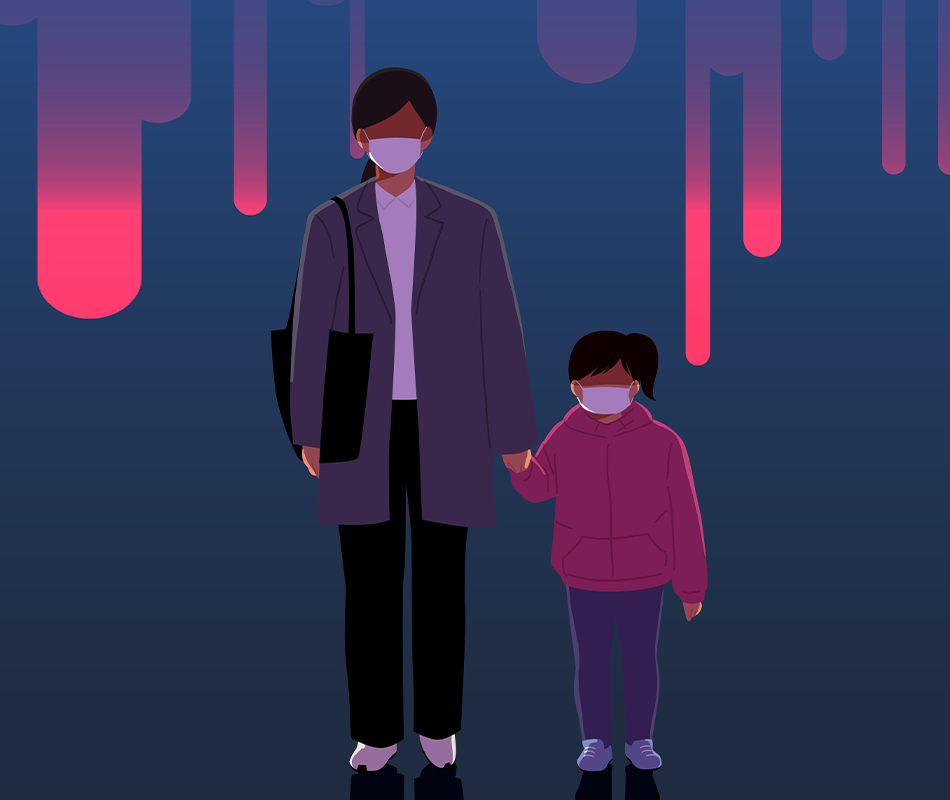
Although you have done nothing wrong, you might be targeted by a 'No * Zone' just because you happen to belong to a certain group.
This is why those who argue against No-Zones believe that such zones are clearly discriminatory.
2. Increasing Tension Between Groups
Needless to say, not all children scream and make a mess, all middle and high school students are not rude, and all religious believers don't lack common sense. But by establishing No-Zones, there is a risk that we might reinforce these stereotypes.
Experts say that by avoiding conflicts instead of trying to resolve and overcome them, the tension between groups in society will increase.
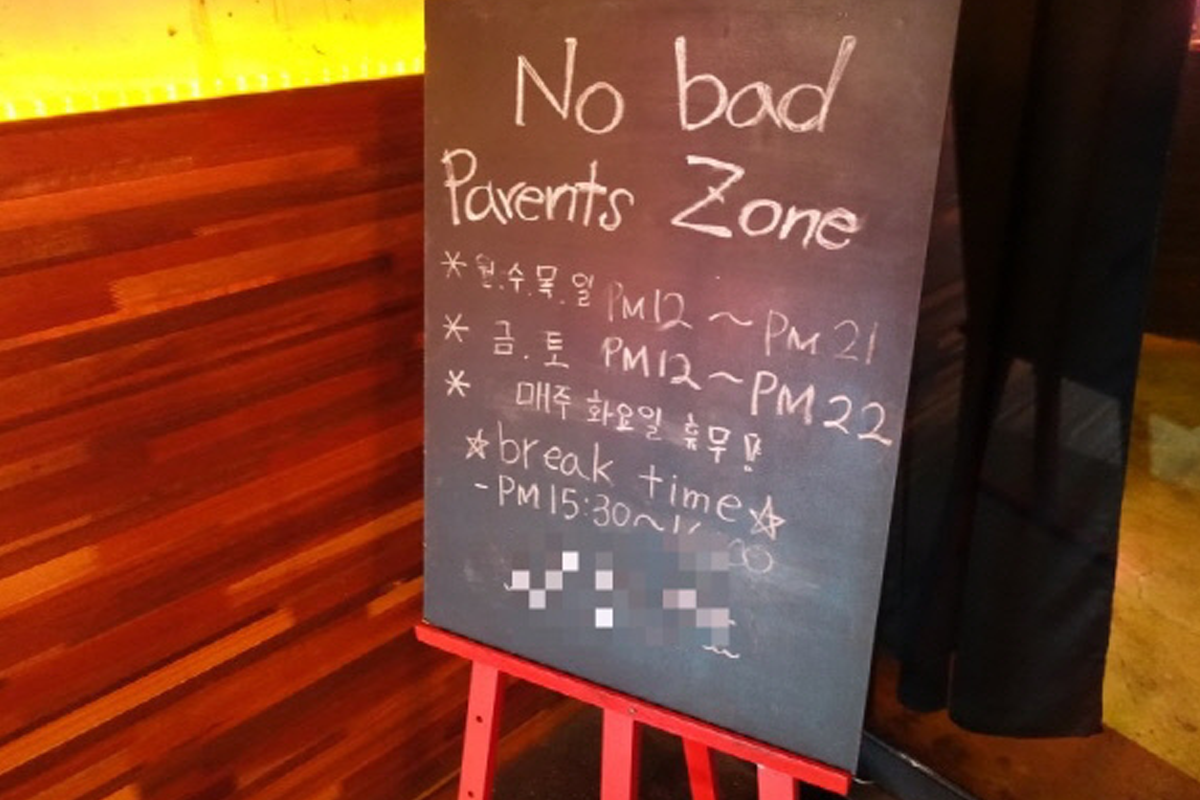 Source: Daegu Shinmun
Source: Daegu Shinmun
For the above reasons, some restaurants have lately choose to instead use the expression 'No Bad Parents Zone' rather than 'No Kids Zone'. Instead of prohibiting all children from entering, parents are asked to make sure that their children behave and show good manners.
It might seem like a subtle difference, but many believe that it's a much better expression. It emphasizes the fact that fault lies not with the child, but with parents who cannot control their children.
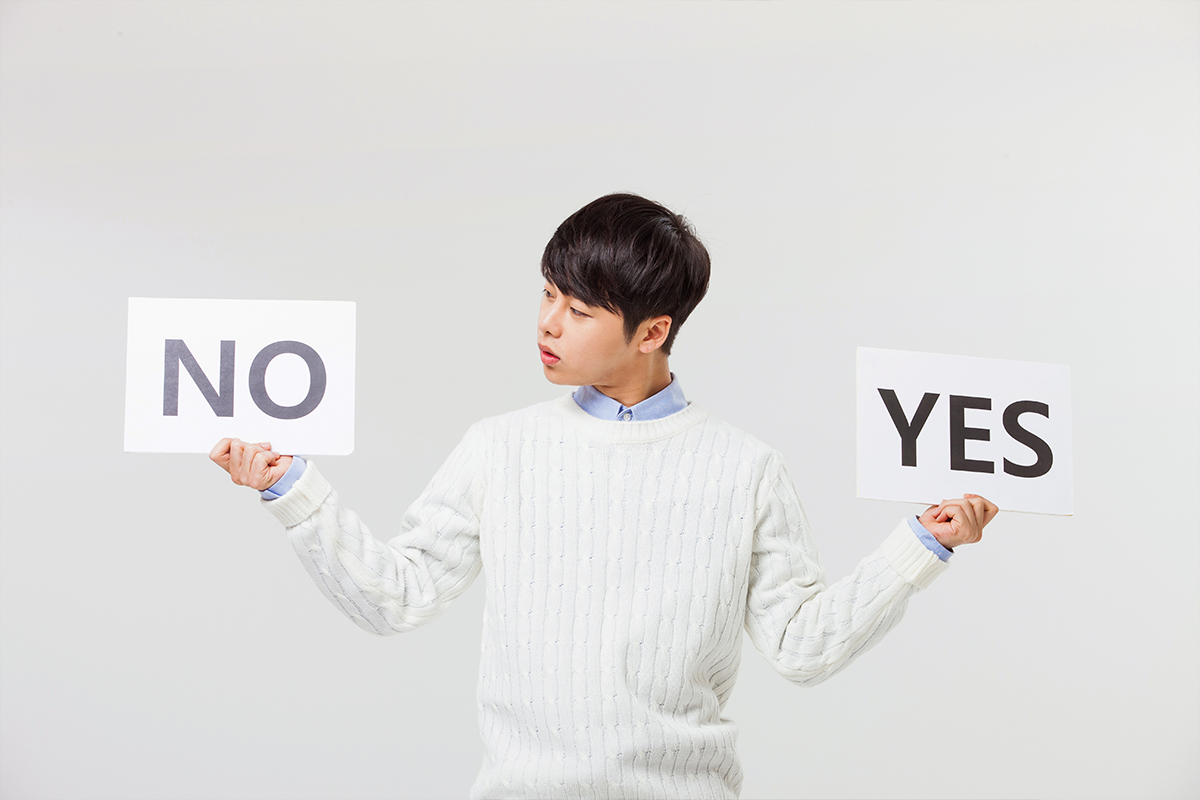
That wraps up this article about Korea's 'No * Zones'.
Personally, we think that No-Zones can be effective in the short term, but they might have a bad effect on the society in the long run.
What do you think?

